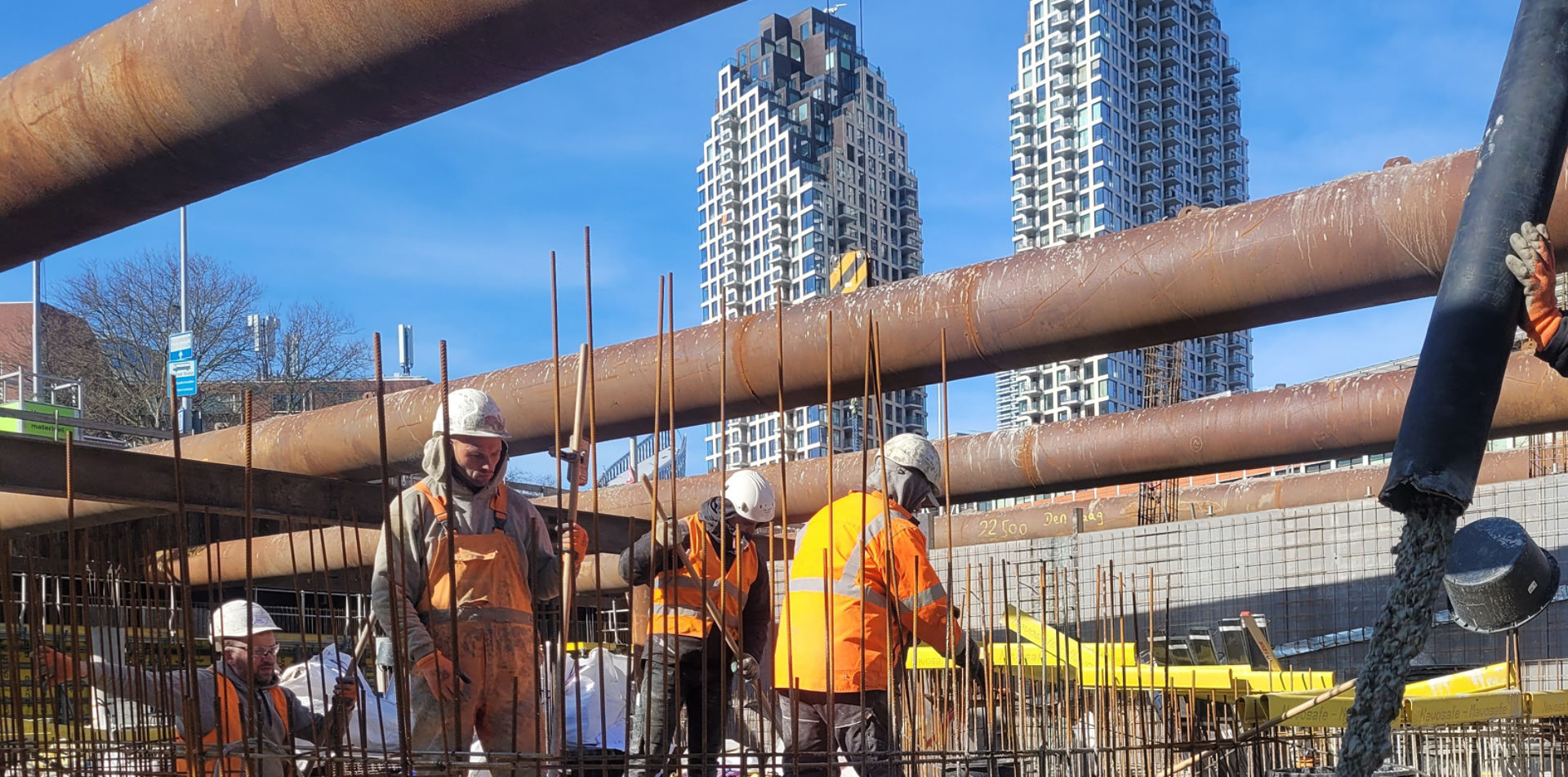
Download
Please provide the following details :
This field is required
This field is required
Please enter valid email (e.g. johnsmith@domain.com)

Please provide the following details :
This field is required
This field is required
Please enter valid email (e.g. johnsmith@domain.com)
Cracking in reinforced concrete is a known phenomenon, which is why it's important to explore how potential cracks can be kept under control. Both engineers and contractors are increasingly opting to combine traditional reinforcement with steel fibers to strengthen a wide range of concrete structures and improve crack control. Let us take a closer look at the notable trends we've observed at Bekaert in recent years.
Controlling cracks in reinforced concrete might sound a bit vague, so let’s delve a bit deeper. We can refer to the Serviceability Limit State (SLS), which limits crack width. In other words, if the crack width remains below a certain threshold, it does not compromise the strength or usability of the structure. When looking at current building codes, such as Eurocode 2, we see that there’s an emphasis on both durability and usability. This includes preventing reinforcement corrosion, aesthetic damage, and ensuring water tightness—all of which require the immediate limitation of crack width.
To calculate crack width in reinforced concrete, the latest rules and formulas are applied, which impose a minimum amount of reinforcement. Beyond this minimum required for crack control, other rules determine the minimum reinforcement to ensure ductility and structural safety under the Ultimate Limit State (ULS). However, excessive cracking in reinforced concrete remains a common issue, even when following these minimum reinforcement rules.
While steel fibers were traditionally used for industrial floors and precast tunnel segments, their range of applications continues to expand. This is largely due to the publication of several local/international standards and the development of new fiber types with significantly improved performance. As a result, steel fibers have increasingly been used in structural applications such as foundation slabs, walls of underground parking garages, basements of apartment buildings/residential towers.
“There’s often water pressure against the bottom of foundation slabs in parking garages/basements due to the depth of these structures and the water table level. This pressure can be quite high, especially when building near a canal, river, or sea. By adding steel fibers, the amount of traditional reinforcement can be significantly reduced while improving crack control” says Bart Wight- Sales manager at Bekaert.
A few years ago, Bekaert was involved in the construction of the National Museum of Norway, the country’s largest cultural center with a surface area of 54,000 m2. Located right by the sea, this project faced underground water pressure. We were able to replace traditional reinforcement with hybrid reinforcement and add steel fibers. The deeper you build, the higher the water pressure, and the more important crack control becomes. If cracks get too large, water simply penetrates—with all the consequences that entails.
Especially when crack control is required and a specific crack width must be achieved, contractors and design firms should opt for hybrid reinforcement, according to Wight. “The tensile strength and anchorage of Dramix® 4D fibers were specifically developed to control cracking and limit crack openings between 0.1 and 0.3 mm, enabling the creation of durable and watertight structures. These fibers, which have several country specific (application) certificates, such as KOMO, ATG, SECO, etc..., offer the highest FR1 rating among all our fibers. They provide a high flexural tensile strength in the serviceability limit state (SLS) within the Dramix® steel fiber range, tested according to NEN EN 14651. The steel fibers are evenly distributed throughout the concrete mass. With hybrid reinforcement, more cracks may form, but they are much smaller and finer, preventing water penetration. As soon as a small crack appears in the concrete, it is immediately bridged by another fiber. With traditional reinforcement, there are fewer cracks, but they tend to be much larger, allowing water to pass through.”
Many design firms struggle with managing water pressure. As such, Bekaert has noticed that traditional reinforcement is increasingly being replaced by traditional reinforcement combined with steel fibers. Additionally, Bekaert offers extensive technical support in selecting the most suitable fiber type, optimal dosage, and appropriate concrete quality for a wide range of applications. Once contractors start using Dramix® steel fibers, they quickly recognize the many benefits in terms of material costs, labor, installation, and time. Many design firms also admit that while traditional reinforcement ensures structural stability, it doesn’t always meet crack width requirements. In such cases, engineers must specify significantly more rebar, which is more expensive, labor-intensive, and harder to install.